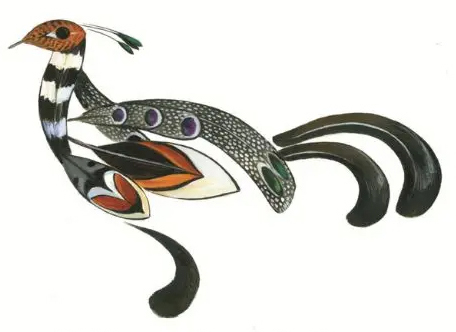Galliformes Specialist Group and Affiliated Societies

Galliformes Specialist Group and Affiliated Societies: Reports and Other Materials
Date of this Version
2007
Document Type
Article
Citation
A publication of the IUCN Species Survival Commission (Gland, Switzerland), Grouse Specialist Group and the World Pheasant Association (Fordingbridge, United Kingdom); compiled and edited by Ilse Storch; 2007
ISBN 978-2-8317-1009-9
Abstract
Executive Summary
Grouse have long attracted and fascinated people. Their display behaviour, and particularly their traditional communal mating grounds or "leks,” have inspired poetry and folklore as well as scientific theories on sexual selection and the evolution of mating systems. In many parts of their range, grouse hunting still plays a major role in the culture, economy, and subsistence of local communities.
The 2006-2010 Grouse Action Plan provides an overview to the distribution, status and threats to all 18 grouse species worldwide and identifies the most immediate conservation needs. It is a product of the joint expertise of the Grouse Specialist Group (GSG), a voluntary network of grouse professionals, and other grouse experts worldwide. The Grouse Action Plan was primarily written as a reference guide for decision makers, agency officials, resource managers and funding organisations, but also scientists and students who share the GSG´s goal of securing viable population of all species and subspecies of grouse in the wild. The Action Plan also aims to underline the importance of grouse conservation in a broader sense: as typical representatives of a wide spectrum of natural habitats, grouse are indicators of ecosystem health. Their indicator function and their attractiveness to people make grouse suitable flagship species to promote the conservation of ecosystems and biodiversity.
At the time of compiling the 2000-2004 Grouse Action Plan (Storch 2000) in 1999, none of the grouse species were considered to be threatened following IUCN criteria, but three species with limited geographic distribution were listed as Near Threatened (IUCN 1996): Caucasian black grouse (Tetrao mlokosiewiczi), Chinese grouse (Bonasa sewerzowi), and Siberian grouse (Dendragapus falcipennis). In 2000, the newly recognized Gunnison sage-grouse (Centrocercus minimus) was listed as Endangered and the Caucasian black grouse was re-classified to Data Deficient. Shortly after, both the lesser prairie-chicken (Tympanuchus pallidinctus) and the greater prairie-chicken (Tympanuchus cupido) were added to the Red List as Vulnerable owing to rapid population declines, and the greater sage-grouse (Centrocercus urophasianus) was listed as Near Threatened (IUCN 2004). At a national level, 14 of the 18 species are red-listed in at least one country. Populations at the southern edge of a species´ range and in densely populated regions are most often red-listed.
Healthy grouse populations require large areas of natural or semi-natural habitat. Thus they compete with increasing human populations and economic development. Based on questionnaire results from 47 countries, deterioration of habitats has been identified as the major threat to grouse worldwide. Habitat degradation, loss and fragmentation due to human land use are considered the most important threats. Other frequently named pressures are small population size, predation, direct exploitation and human disturbance. Current approaches to grouse conservation include legislation, protected areas, surveys and monitoring, habitat management, captive breeding, re-introduction and re-enforcement, predator control, reduction of human disturbance and education. Integrating habitat preservation and human land use practices remain to be the major challenge to grouse conservationists worldwide.
After a short introduction to grouse and the Action Plan, the history of the Action Plan and the scientific basis of grouse conservation are outlined in Chapter 1. Chapter 2 provides an overview to the conservation biology of grouse and summarises major threats and current conservation measures. Brief accounts for each species are provided in Chapter 3, compiling information on status, taxonomy, distribution, population, ecology, cultural importance, threats, research needs and current and recommended conservation measures. In Chapter 4, conservation and research priorities are proposed for the most threatened taxa (Gunnison sagegrouse, greater and lesser prairie-chicken, greater sagegrouse, Chinese grouse, Caucasian black grouse, Siberian grouse, Attwater´s prairie-chicken, Cantabrian capercaillie, and Gunnison sage-grouse). The recommendations were sketched by leading specialists on the different taxa and provide preliminary outlines that may be used to develop detailed project proposals. Proposed measures span from population surveys, research into the effects of human land use on grouse habitats and populations and integration of land use practices and grouse conservation needs to population recovery programmes. Readers interested in the implementation of any part of the plan are requested to contact the chairman of the GSG or the relevant local correspondents (see http://www.gct.org.uk/gsg/). We hope that the Action Plan will find a wide distribution as a tool to promote and implement grouse conservation.


Comments
Copyright: © 2007, International Union for Conservation of Nature and Natural Resources and World Pheasant Association
Permission: Reproduction of this publication for educational or other non-commercial purposes is authorized without prior written permission from the copyright holder provided the source is fully acknowledged